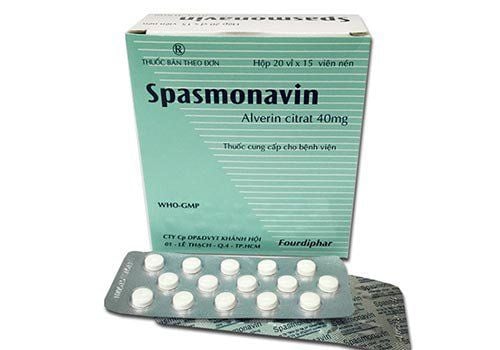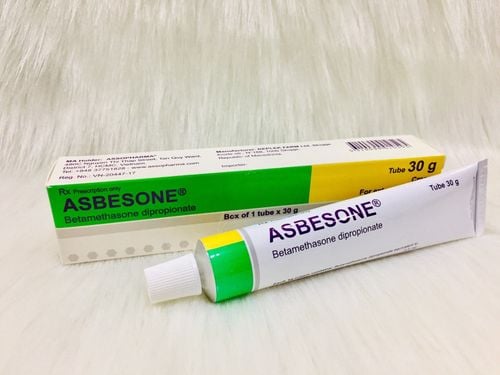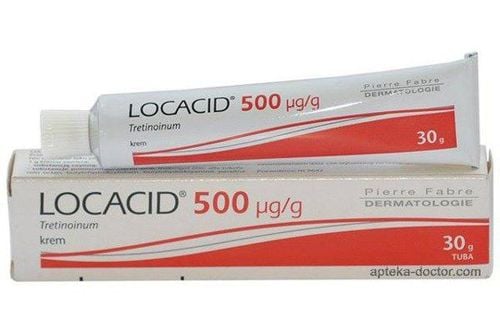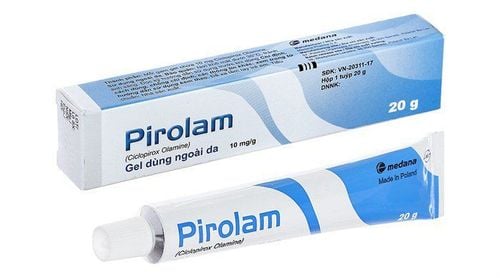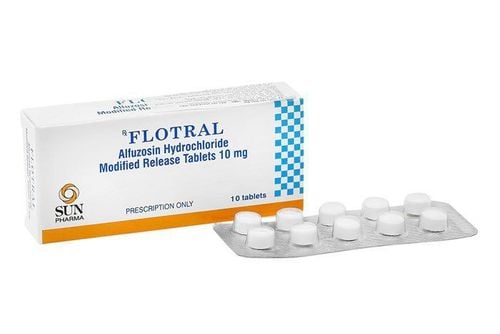This is an automatically translated article.
Acne is a common skin condition that causes quite a lot of discomfort for sufferers. As one of the products in the group of acne medications, Clascoterone cream, although not the first choice, can still be considered. So how does Clascoterone work and what should be noted when using it.1. Clascoterone uses
Clascoterone is a prescription product used for a common skin condition called acne.
This medication is available as a topical cream, commonly marketed under the brand name Winlevi. Pharmacodynamics: Clascoterone exerts antiandrogen effects by acting as an antagonist at androgen receptors (ARs) in the skin, including the sebaceous glands, sebocytes, and dermal papillary cells. Clascoterone blocks the effects of testosterone and dihydrotestosterone (DHT), which are androgens that bind to AR and contribute to the development of androgen-dependent conditions such as acne and hair loss.
Indications: Clascoterone is approved for the topical treatment of acne in patients 12 years of age and older.
2. How to use Clascoterone?
Clascoterone cream should not be used in children under 12 years of age because the safety and effectiveness of the drug have not been established in this population.
The presence of certain other medical problems may affect the use of Clascoterone, such as:
Eczema Sunburn: Not recommended as it may cause skin irritation. You need to follow the instructions from your doctor when using the medicine, do not take it more often, more often or for longer than prescribed. Doing so may cause skin irritation. You may need to use this medicine for several weeks or months before your skin starts to look better. Adding more medicine will not make the effect faster.
Clascoterone cream is for use on the skin only. Do not let the medicine get in your mouth, eyes, nose or vagina. Do not apply the medicine to areas of skin with cuts or scrapes. Wash it off immediately if it gets on the above areas.
How to use Clascoterone cream:
Wash your hands with soap and water before and after using the medicine. Gently wash and dry the affected area. After the skin is dry, apply a thin layer of cream evenly on the acne areas. Do not apply this medication to sunburned skin or open wounds. Dosage, frequency of administration, and time between doses will depend on the individual patient's medical condition. The dose below is the average dose for reference:
For adults and children 12 years of age and older: Apply a thin layer to the affected skin(s) twice a day in the morning and in the evening. Some notes when using Clascoterone:
Your doctor will need regular visits to check your progress. This allows your doctor to assess whether the medicine is working properly and to decide if you should continue using it. Some blood tests may also need to be done to check for unwanted effects of the medicine. If your condition doesn't improve or gets worse, get checked out early. Skin reactions including local skin irritation, itching, burning, skin redness or peeling, dry skin, scaly skin, stinging sensation may occur using this medicine. This medicine may cause pituitary or adrenal gland problems. Check with your doctor right away if skin darkening, dizziness, fainting, diarrhea, loss of appetite, nausea, vomiting, mental weakness, fatigue, skin rash occurs. Skin products that can dry or irritate the skin should be avoided such as:
Products for sensitive skin to the sun. Skin products contain large amounts of alcohol. Products that make the skin too dry such as some cosmetics, soaps or skin cleansers. Store Clascoterone out of the reach of children, in an airtight container at room temperature, away from heat, moisture and direct light.
Do not keep medicine that has expired or when it is no longer needed. Throw away unused medication 180 days after distribution or 1 month after first opening, whichever is earlier.
3. Some drug interactions and side effects of Clascoterone
3.1. Drug interactions
Capromab pendetide: This medicine may decrease the effectiveness of Capromab pendetide. Human C1-esterase inhibitor: Increased risk or severity of thrombosis combined Clascoterone with a Nuclear C1-esterase inhibitor. Conestat alfa: Increased risk or severity of thrombosis combines Clascoterone with Conestat alfa.
3.2. Side Effects
In addition to the necessary effects, Clascoterone cream can also cause some unwanted effects.
Common Reactions:
Darkening of the skin Diarrhea Fainting Irritability Itching or redness at the application site Loss of appetite Nausea Dark red rashes on the skin such as warts , especially when used on the face Purple lines redness of the face, arms, trunk, legs, groin Unusual fatigue, weakness Vomiting Rare:
Dryness, skin discoloration, pain or swelling at the site of application Rash, rash, itching In addition to regular application Or take acne medication as directed by an expert, try to incorporate some other self-care tips into your daily routine such as: Use sunscreen, moisturize, don't pop pimples, etc. . to bring the best effect.




